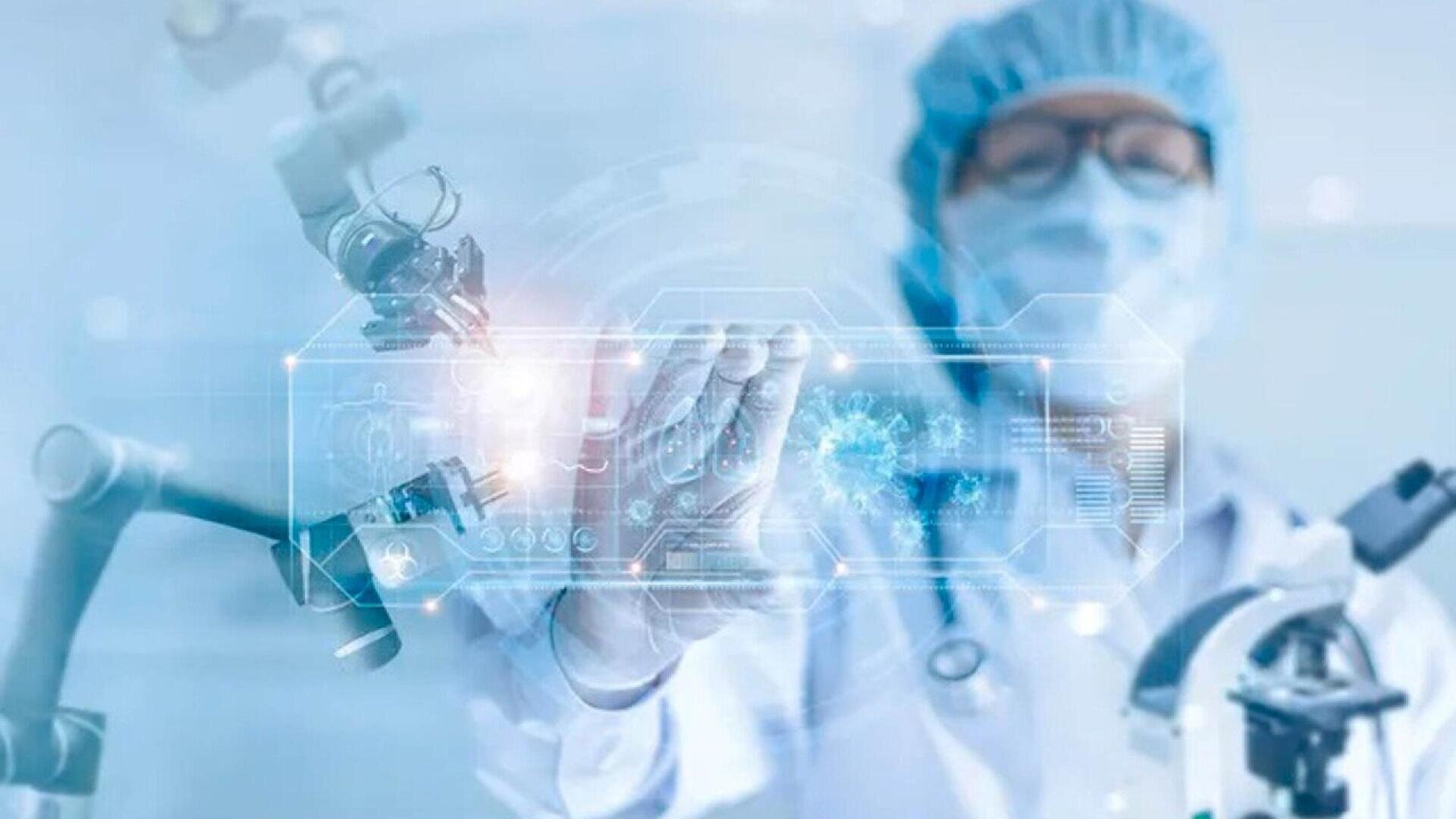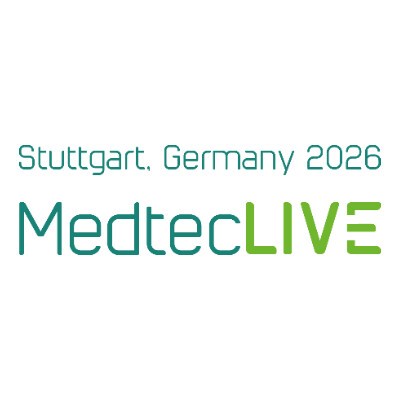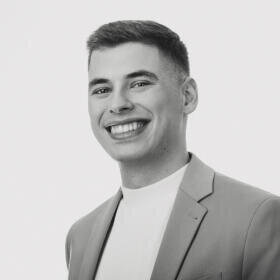A journey through the heart of the Medtech industry
A medtech investor looking to invest in the German-speaking region is spoiled for choice. The south in particular has a lot to offer. The region is home to market-leading companies, numerous research institutes, and a lively start-up scene.
The journey begins: Eierschecke (a kind of cake), Striezelmarkt and Medtech
Starting point is Dresden, the capital of the German federal state of Saxony, with a population of around four million. A cluster with a lot going on. The Saxony-wide association biosaxony connects members from biotechnology, medical technology and healthcare industries. However, based in the state capital, the association is also very active at its second location in Leipzig. "Dresden is a great science location with medical technology and engineering, but Leipzig is where the economic heart of Saxony's life sciences beats," says André Hofmann, Managing Director of biosaxony. The association was founded in 2009, emerging from the "Biotechnologie-Offensive Sachsen" (a biotechnology movement in Saxony); the focus on medical technology was added in 2016.
The 136 members are companies, suppliers, research institutions and stakeholders whose locations are not limited to Saxony. "Anyone who would like to collaborate with us on our central topics is always welcome," says Hofmann. Many scientific institutes, colleges and universities in the region ensure a large share of qualified specialists who are permanently working together with research on the development of innovations.
As a result, many medical technology companies have already settled in Saxony. This cluster also plays a role in the global market. Hofmann says: "We are, of course, particularly proud to have the most modern production facility for dialysers from B. Braun here." A leading global manufacturer when it comes to medical technology, pharmaceutical products or services. Innovative developments for patients, such as those achieved by Sonovum in Saxony, are particularly exciting. The company has developed a type of headband that uses state-of-the-art ultrasound technology to detect strokes and their causes. Its attractive medtech environment characterises Saxony.
The medtech cluster also reveals its strong side in start-ups: Many exciting developments are on the verge of entering the market or have already recently taken this step. The start-ups' topics are diverse: Next3D will soon be founded in the specialist field of 3D printing, eCovery is the physiotherapist for your pocket, or DOCYET is a digital application that supports patients in making decisions on health issues and improves allocation in healthcare facilities. One current project is the Virtual Accelerator for Smart Data, Medical Devices and Therapies for start-ups, which was launched together with the Leipzig Heart Institute to support the market entry of founding companies and promote innovation.
At MedtecLIVE with T4M, biosaxony and some association members will be on-site – also to promote their accelerator MEDICAL FORGE. "We are looking forward to the event; it's already marked on our calendar," says Hofmann. So much for Saxony's medtech cluster – just three hours away, the Nuremberg metropolitan region is wooing medical technology investors.
Next stop: The city of gingerbread, Bratwurst (fried sausages) and medical technology
We have arrived in the second-largest city in Bavaria with its 520,000 residents. This city is also the home of the MedtecLIVE organiser, NürnbergMesse GmbH. The Nuremberg Metropolitan Region is an association of around 55 cities covering a large part of northern Bavaria. Medical Valley is the name of one of the internationally leading medical technology clusters, which "has been functioning as a cluster organisation since 2007," says Jörg Trinkwalter, Managing Director of Medical Valley. Out of this emerged a cycle from which science and research partners benefited and based on which a supplier industry was built up.
Today, the association has four locations and around 230 members, most of which are companies and include research institutions and suppliers. "The bottom line is that we are a sector-focused business promoter with the goal of networking the various components in medical technology and supporting them, for example, with certifications, cost reimbursements, internationalisation, research projects or developments of innovations," Trinkwalter explains. Apart from the association, there is also the Medical Valley GmbH, which can, for example, take stakes in companies. In cooperation with the Fraunhofer-Institut für Integrierte Schaltungen, it has developed the dmac (Digital Medical Application Centre), promoting and supporting digital health products.
If you take a look at the companies located here, one thing immediately stands out: There are quite a few global players here, such as Siemens Healthineers or Ziehm Imaging, and numerous innovative start-ups. "Many of the hotspots for medical technology are located in southern Germany. We have a very attractive research scene here with a high concentration of professorships and non-university research institutions focused on medical technology, and there is also a first-rate industrial network for the sector," explains Trinkwalter. Many criteria make this region very attractive for start-ups.
All this is also attracting a lot of companies. Siemens Healthineers is one of the top medical technology companies worldwide and was founded in the Medical Valley region. In the C-arms sector, we have Ziehm Imaging, "Global player and hidden champion, I would say," is Trinkwalter's assessment of the company. Novartis Pharma, at the interface of diagnostics and medicine, has also found its headquarters in the Nuremberg Metropolitan Region. The list is seemingly endless, with new companies being added all the time. Some start-ups are on their way to market entry, for example, in the field of digital health applications (DiGA): " We have Portabiles HealthCare Technologies which will soon become a DiGA company, ProCarement, also soon to become a DiGA company," Trinkwalter reports. To promote such young companies in the market, some application-oriented projects are offered the opportunity to receive generous financial support via the Medical Valley Award. Some of the start-ups have already participated in the MedtecLIVE start-up award contest to gain feedback from industry experts, but not least to win attractive prize money.
Medical Valley is also co-founder of the European network EIT-Health, one of the world's most significant health and medtech networks worldwide. There are particularly strong collaborations with Austria and Switzerland; however, according to Trinkwalter: "Almost all the life science clusters in the DACH region (Germany, Austria, Switzerland) work together." The association is not only active in Europe – core cooperation partners are located in the USA, Canada, China and Japan.
Networks and networking are an essential part of a functioning and growing medical technology market. All the better that: "MedtecLIVE with T4M, as the industry’s European medical technology event in the spring, brings together and connects all the important players," says Boss. The journey continues south: after four hours, we reach Tuttlingen in the Black Forest.
Next stop: Home to Spätzle (Swabian noodles), thrifty people and Medtech brains
The doors open, and a small town with 35,000 residents welcomes you warmly: Tuttlingen, home to Medical Mountains. This network cluster manages companies, research institutions and the like in and beyond the Baden-Württemberg region. It was established in 2010 by public authorities to support the region. There is a lot going on here: "If we look at Germany, we see a distinct focus on medical technology in Baden-Württemberg with the epicentre in Tuttlingen. Almost half of the medical technology companies in the state are located here in Tuttlingen," says Yvonne Glienke, Managing Director of Medical Mountains.
The region's structure is a colourful mix. Baden-Württemberg has almost 49,000 employees in the medical technology sector, but around half of the companies employ fewer than ten people. "The core of our region comprises small, family-run and medium-sized companies," Glienke points out. But also international global players such as Karl Storz from the endoscopy sector are represented. The companies come from a wide variety of sectors, with a focus on surgical instruments. Glienke says: "If you want to be in the heart of medical technology in Europe, you should come to southern Germany. Here is where medical technology is at home and where the best of the best are."
Many companies are family-run. This does not mean that they are not at the forefront of new developments. "Tradition does not exclude innovation. On the contrary, it even advocates it," says Glienke. Most developments are in-house – there are not too many start-ups in this region. The high proportion of existing medical technology companies means that there are excellent employment opportunities for graduates. Despite the low number of start-ups, Medical Mountains works with founders from all over Germany to advance technologies and expand the network.
But Medical Mountains not only maintain cooperative relationships in Germany: Due to the geographical proximity to Switzerland, many members are also located there. People often forget that there is a border between the countries because, in Tuttlingen, it is normal to take a quick trip to Switzerland. The network, however, reaches even further to the north: Medical Mountains have a unique cooperation with the Oulu region in Finland that has been going on for several years, and they have already launched several business cooperation projects with them, such as delegation trips to the high-tech partner region.
For the Tuttlingen-based company, it is a great pleasure that MedtecLIVE with T4M will be held as one big joint trade fair in Stuttgart in spring 2022. "From the very beginning, we wanted there to be only one big event in the heart of medical technology, in southern Germany. That way, we don't have to decide," explains Glienke. Medical Mountains and biosaxony and Medical Valley, are looking forward to the event, which will alternate between Stuttgart and Nuremberg.
The journey continues. The next medtech cluster is an hour away in the border triangle: Constance on Lake Constance.
Next stop: Next to Austria and Switzerland on the medical technology beach
BioLAGO is the network for the health industry, which, as the name might suggest, is located directly on Lake Constance in Constance, a city with a population of around 85,000. BioLAGO's members are not only from Baden-Württemberg; many are also based in Switzerland or Austria. Thus, around 49,000 employees are active in the medical technology sector in the Lake Constance region.
What makes the region so special? Eva Botzenhart-Eggstein, Project Manager for the BioLAGO health network, explains: "The four-country region of Lake Constance is characterised by a large number of innovative small and medium-sized companies in the health industry. These are complemented by outstanding universities, such as the ‘Exzellenzuniversität’ in Constance, which ensure highly qualified young scientists in the region." The region also has a dynamic environment where the development of innovations is always encouraged and promoted and a strong economic power as a border region to Austria and Switzerland. The geographical location can provide market access as far as Italy.
The diverse medical technology companies in the region enhance the industry with innovative developments; for example, StimOS GmbH, based in Constance, researches and develops novel implant materials and implant surfaces. The company's research focuses on surface enhancement and functionalisation, bioactivation, active ingredient transport and next-generation implant materials. StimOS GmbH is committed to faster and more stable healing of implants without inflammatory reactions or other complications. "StimOS GmbH is setting new standards in this field, which I find quite noteworthy," adds Eva Botzenhart-Eggstein. Another innovative company is MTS Medical UG, a medical technology manufacturer that uses sound waves to treat diseases or ailments. The therapy system is applied internationally, especially in orthopaedics, traumatology, wound healing and urology.
BioLAGO is part of a consortium of 16 Germany-wide partners in the AIQNET innovation project. In this project funded by the Federal Ministry of Economics and Technology, an open, digital ecosystem is being developed. In the future, this ecosystem should make it possible to exchange medical data using artificial intelligence and thereby make it usable for research, diagnosis and treatment. The aim is to integrate as many medical technology experts as possible along the entire value chain in the ecosystem to facilitate a worldwide exchange of clinical data under the highest technical safety standards. "AIQNET is a terrific project because it ensures a long-term improvement in patient safety and further development of innovative medical products. A cause very near and dear to my heart," Botzenhart-Eggstein said. Here we come full circle again as Medical Mountains are also involved.
The fact that MedtecLIVE with T4M will launch as a major event in Stuttgart next spring is also highly welcomed by BioLAGO: "Personally, I think it's great! I'm looking forward to an exciting event that will successfully bring together medical technology experts from various fields," Eva Botzenhart-Eggstein concludes.
Christopher Boss is very pleased with the great approval: "MedtecLIVE with T4M brings Europe's medtech community even closer together and, thanks to its unique focus on future topics, sets innovation impulses for the entire industry."
About MedtecLIVE with T4M
The annual trade fair MedtecLIVE with T4M is the leading European springtime event for medical technology alternating between Stuttgart and Nuremberg. The event covers the entire value chain, connecting Germany's most important medical technology regions. Here decision-makers from the distributors and OEMs meet with the most important medical technology suppliers.


